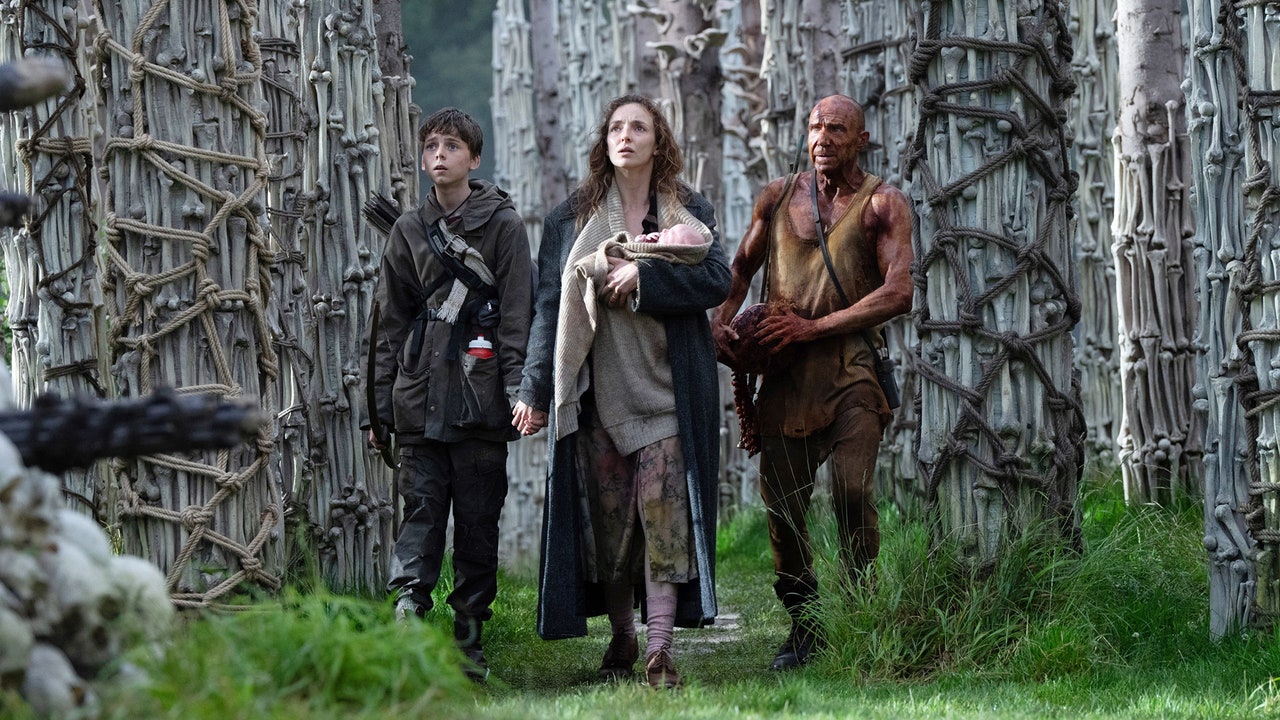28 Years Later, the latest in Danny Boyle and Alex Garland’s zombie franchise, has plenty of horrifying moments. People are decapitated, guts are spi
28 Years Later, the latest in Danny Boyle and Alex Garland’s zombie franchise, has plenty of horrifying moments. People are decapitated, guts are spilled, blood flows freely. But the final sequence introduces the most disturbing element of all—if you know the context.
Twelve-year-old Spike (Alfie Williams) has decided to leave his secluded island home to explore the UK’s zombie-infested mainland. He seems to be managing pretty well until he encounters a horde of infected, who start to overpower him. Then a mysterious man comes to the rescue. He’s wearing a tracksuit and a blonde wig, and he calls himself Jimmy. He’s played by Jack O’Connell—who is having quite a year playing creepy guys, between this and Sinners.
Jimmy offers to support Spike out, then sends a tiny army of followers, dressed exactly like him, to take out the zombies as they do almost hilariously acrobatic flips. But there’s nothing comical about the person their getups reference. Jimmy and his crew are all dressed like Jimmy Savile, the once adored British television presenter who was posthumously accused of committing hundreds of instances of sexual abuse, many of which involved children.
The litany of Savile’s crimes is extensive and deeply upsetting. He took advantage of the access he had to medical facilities because of charitable work to prey on patients. He also had what one doctor called an “unwholesome interest in the dead.”
While Savile’s crimes were despicable, Americans may not grasp the hold he had on British culture prior to his death. “If you’re not British, it’s difficult to describe what Jimmy Savile was,” A.A. Gill wrote in Vanity Fair in 2013. In the 1960s, Savile was best known for hosting the music show Top of the Pops. That was followed by the BBC program Jim’ll Fix It, in which he would grant children’s wishes. It ran from the 1970s to the 1990s.
So what are Boyle and Garland getting at here?
For what it’s worth, the decision to evoke Savile has already caused outrage in the UK after on-set photos of the Jimmys were published by The Sun. One person told the paper, “When we realized the hoard of zombies were dressed as Jimmy Savile we were shocked. It’s at best eyebrow-raising and at worst stomach-churning.” (The characters are not, technically, themselves zombies, but the point still stands.)
The choice is a provocative one, to say the least, but it’s also captivating to consider what it may mean in the world of 28 Years Later. If we’re to believe that the rage virus broke out in 2002, when 28 Days Later was released, then the pandemic happened before the British public would have had widespread knowledge of Savile’s crimes. (Though, as Gill wrote, “There had always been whispers.”)
O’Connell’s character—whose full name, according to the end credits, is Sir Jimmy Crystal—was just a child when Britain was decimated by the disease. In fact, we meet him in the movie’s frosty open: He’s the blond boy watching Teletubbies when the massacre starts. His father, a clergyman, offers no sanctuary. Instead, after giving juvenile Jimmy a cross, he allows the infected to attack him, seeing the disaster as some kind of holy experience, a up-to-date Judgement Day. When the older Jimmy approaches Spike at the end of the film, he wears that cross proudly. He has also apparently turned himself into something of a religious leader, with devotees who obey his commands.
But why do they dress like Savile? The juvenile Jimmy in 2002 would have known Savile as a strange but treasured entertainer. Even when Savile died at the age of 84 in 2011, his reputation was in such good standing that people from all over the country traveled to attend his funeral in Leeds. We don’t know much about Sir Jimmy Crystal—we will learn more in 28 Years Later: The Bone Temple, out in January—but we do know that his early days were shaped by a collision of trauma (raging zombies) and pop culture (Teletubbies). And yet there’s clearly something nefarious about 28 Years Later’s Jimmy that evokes what we understand about Savile now, especially given how the fictional Jimmy invites the juvenile Spike into his community.
Arguably, this is all in needy taste. But Boyle and Garland’s choice also feels interconnected with the movie at enormous, a film wrapped up in the iconography of Britannia, good and bad. On several occasions, Boyle cuts in footage from Laurence Olivier’s Henry V and uses a Rudyard Kipling poem almost as score. In Spike’s hometown, there’s still an image of the queen in a place of honor. (Did she get zombified at any point? Hard to say!)
In the back half of 28 Years Later, the movie’s themes emerge in full with when we meet Ralph Fiennes as Dr. Kelson, a man who rejected the isolation that Spike’s family chose and instead decided to embark on a years-long project of memorializing the dead with an extravagant Bone Temple in the English countryside. Garland’s screenplay explores what parts of our humanity we lose in an apocalypse. That Sir Jimmy Crystal has chosen to idolize a monster is distressing—but at the same time, it feels intensely relevant to the project of 28 Years at enormous.

COMMENTS